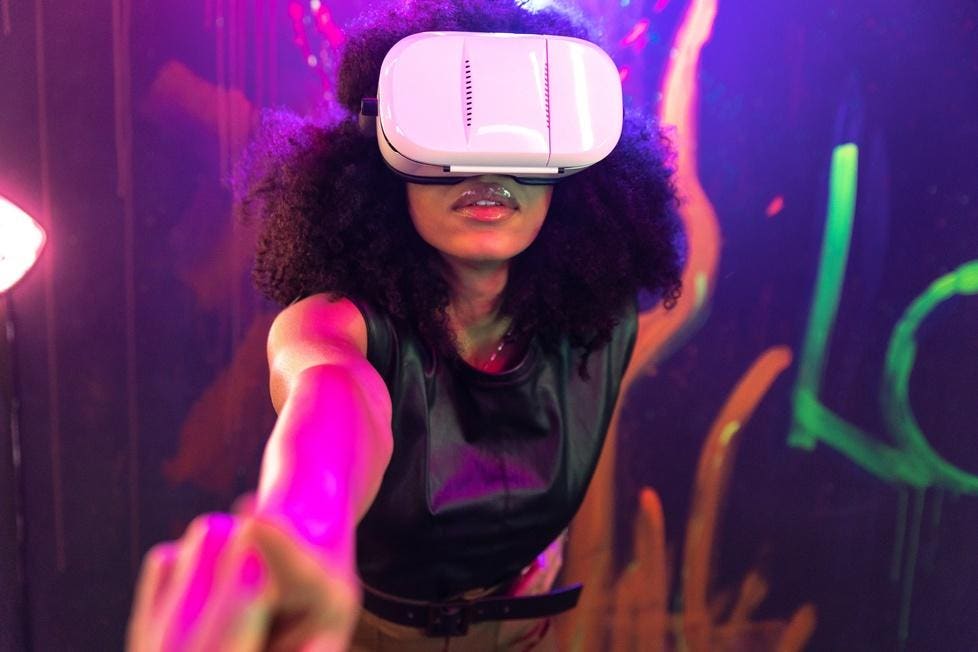Kaj Leroy: Transmuting Digital Paradigms CEO/Founder of XPUNKS & onXRP, revolutionizing businesses through innovative digital solutions.
Augmented reality (AR) is a groundbreaking technology that has the potential to seamlessly integrate digital content into the user’s real-world environment, providing an interactive and immersive experience.
Over the past few years, AR has gained significant traction in various industries and applications, revolutionizing the way we interact with the world around us. From gaming and entertainment to retail and education, I believe AR is poised to become an integral part of our everyday lives. Therefore, it can be helpful to understand its current and potential applications.
AR’s Impact On Various Fields
Blockchain technology
I see AR and blockchain as a perfect match. By leveraging the security, transparency and immutability of blockchain, AR applications can provide users with verifiable and tamper-proof digital assets. This combination can pave the way for various use cases, such as secure asset tracking, authentication and even decentralized AR experiences.
Nonfungible tokens
Nonfungible tokens (NFTs) are unique digital assets that represent ownership of a specific item or content. AR technology can bring NFTs to life by enabling users to visualize, interact with and display their digital collectibles in the real world. This fusion of AR and NFTs is set to redefine digital ownership and create new opportunities for artists, creators and collectors.
Gaming
The gaming industry has been quick to adopt AR technology, providing players with immersive and engaging experiences. Examples like Pokémon Go have effectively showcased the possibilities of AR gaming by utilizing the player’s camera, GPS and gyroscope to guide them to locations where the game overlays virtual elements onto the real world. As AR continues to advance, the gaming industry will undoubtedly see more innovative and immersive AR games.
AR’s Future
I see the future of AR as closely tied to the ongoing developments in blockchain, NFTs, gaming and the metaverse. As these technologies continue to evolve, we can expect significant advancements in AR capabilities such as improved tracking, more realistic visuals and better integration with wearable devices.
Moreover, I see the convergence of AR with blockchain and NFTs giving rise to a new digital economy where users can trade, buy and sell virtual goods and experiences. In the gaming realm, AR could enable more immersive and interactive experiences, blurring the lines between the physical and digital worlds. As the metaverse becomes a reality, AR will likely be a key component in creating this interconnected digital universe.
Embracing AR For Business Success
As AR technology continues to evolve, I believe that businesses across various industries must adapt and leverage its potential to stay competitive.
For example, retailers can use AR for virtual try-ons, enhancing the customer experience and reducing returns. RTFKT, a company recently acquired by Nike, is revolutionizing clothing design through the integration of AR technology. By employing intricate and unique animations through NFC chips in hoodies, clothing bought in the real world can come to life virtually, offering consumers an immersive and personalized experience.
Similarly, AR can also provide interactive and immersive learning experiences in education, making complex concepts more accessible and engaging. Or healthcare providers can harness AR for remote consultations and visualization of medical data.
Furthermore, real estate companies can use AR to create virtual tours, allowing potential buyers to explore properties remotely. An example of one company doing this with Web3 technology is Ouse Token, which allows users to walk through virtual tours of their metaverse homes. AR technology can also be utilized to go through high-end real estate and then sell versions of it in existing metaverses.
Apple is going heavy on AR as well with its new product, Apple Glasses. I believe large companies like Apple and Nike investing in this technology clearly indicate where future trends are heading.
The reason these companies use AR technology is to create a more engaging and personalized experience for their communities. Through AR, you can create visuals that were previously only possible through holograms in movies.
All these digital objects, made to use with AR, can be stored on the blockchain as NFTs. This has the potential to create a completely new digital economy of digital wearables where customers can express themselves in completely new ways.
The Dawn Of Enhanced Realities
In summary, AR is significantly influenced by the progression and integration of other blockchain and Web3 technology. As these groundbreaking areas develop and converge, I believe AR will be at the forefront of redefining our digital experiences and interactions.
The combination of AR with blockchain and NFTs can create an innovative digital economy, while the incorporation of AR in gaming and the metaverse has the potential to blur the lines between the physical and digital realms.
I believe that companies that strategically implement AR technology can not only excel in this dynamic environment but lead the way in discovering new methods of connecting, engaging and collaborating with their audience. As we look forward to the future, the potential for AR is immense and transformative, signaling the dawn of enhanced realities that can revolutionize our perception of the world.
Forbes Business Council is the foremost growth and networking organization for business owners and leaders. Do I qualify?
Read the full article here










